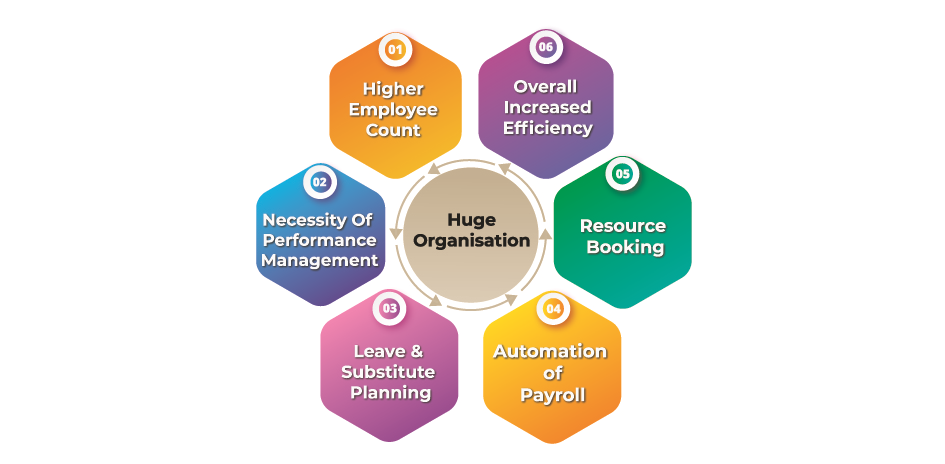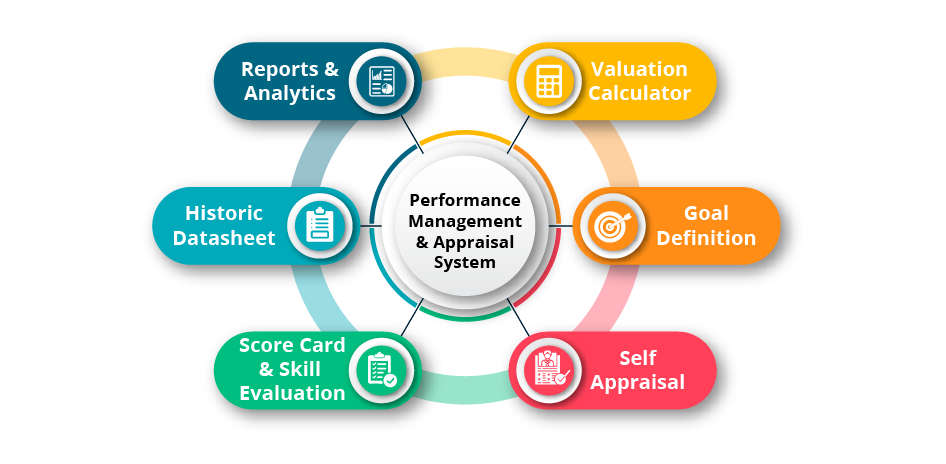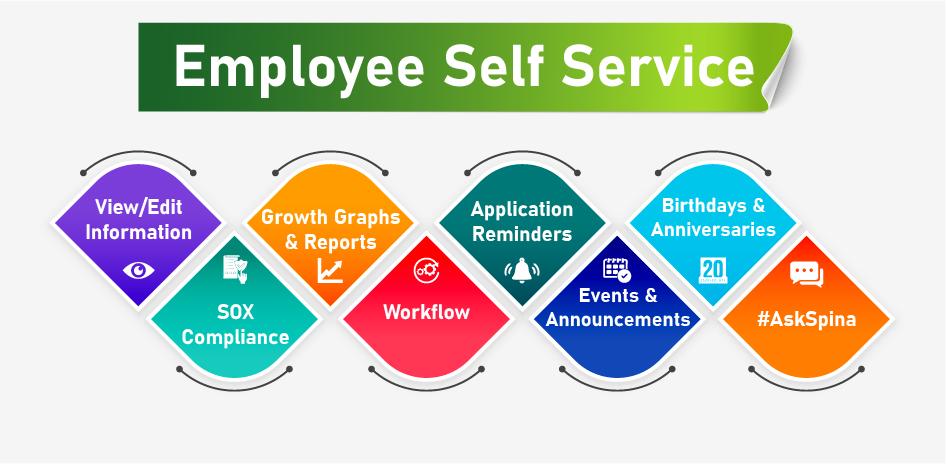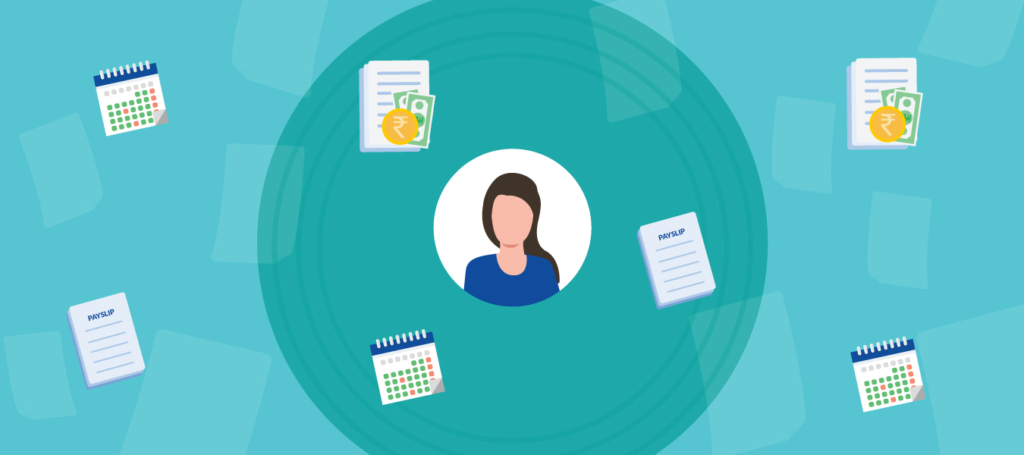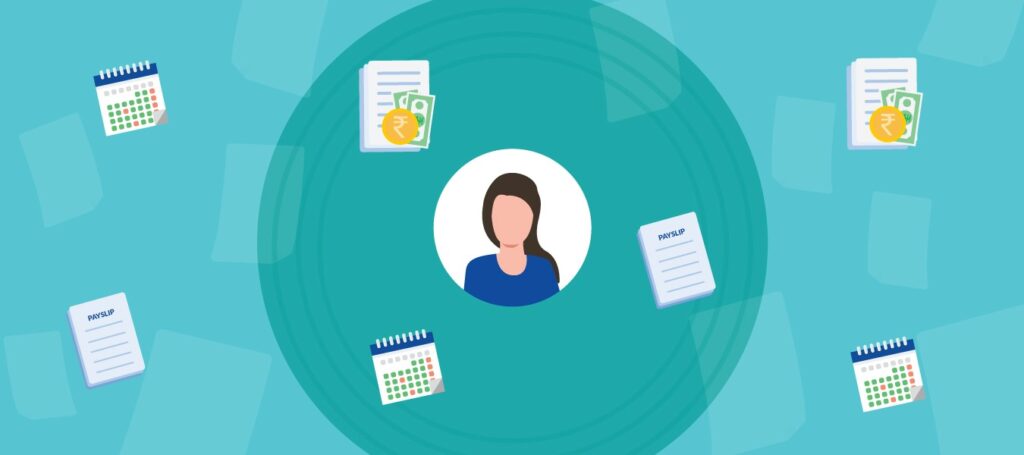Bigger workforce? Loads of pending tasks? Month end blues? Worry Not, HRMS is here to save the day!
Since we have already discussed the need for HRMS in smaller organisations, it is time we talk about how an HRM System is a necessity in the bigger organisation. Be it an organisation with 1000 employees or more than 5000 employees, an HR Software always gives you accurate and efficient performance and reports regardless of the employee count. Below listed are the factors that make HRMS a necessity in huge organisations.
Higher Employee Count
Needless to say, a bigger organisation has a Higher Employee Count than a smaller one. The employee count may range from a thousand employees to five thousand and more. Huge number of employees call for a better and efficient way of management. Sure the traditional, manual way of managing the workforce is great but it has many limitations attached to it. HRMS on the other hand automates the tedious processes and enables the managers to focus on productivity improvement.
Necessity of Performance Management
As the number of employees increases, the difficulty of performance tracking and managing increases as well. Having an HR System implemented ensures that the employer has access to growth reports, performance analytics and the overall productivity gist on their fingertips, anytime and anywhere.
Leave & Substitute Planning
Why skip a day’s tasks when you can appoint substitutes for the employees on leave? An HCM Software allows you to easily communicate and track the leaves and the substitutes appointed for the day. Keeping a track of such data is crucial because every single day affects the performance of the company. Besides that, having a huge workforce makes it harder for the manager to communicate with the employee who is appointed as the substitute. HRMS tackles this problem by notifying the appointed substitute beforehand.
Automation of Payroll
Let’s be honest, month ends are the worst! Attendance, Leave and Arrear Calculation, Salary Calculation, Payroll and Payslip disbursement and all other such burdensome tasks hinder the workforce management duty of the HR. With an HRMS implemented, calculations and disbursements can be totally automated and the HR can properly concentrate on workforce management and maintenance of a friendly and goal oriented environment in the workplace.
Resource Booking
Let’s face it, a bigger workforce means more difficulty in direct communication and also increased chances of miscommunication. Assignment of proper tasks to the proper resources is a task on its own. A manager might miss that out in the communication or it might get lost in between the levels of the hierarchy. HRMS makes it so that the employee can see the tasks assigned to them on the portal itself. The Manager can directly assign tasks without the risk of getting lost or miscommunicating it. It is safe to say that an HR Software eliminates the risk of miscommunication.
Overall Increased Efficiency
Automation if used right, makes things way more efficient and with Spine HR Suite efficiency can be achieved at its finest. 19 different productivity enhancing modules to choose from, Octagonal Client Support, more than 20 years of experience and three different deployment options to choose from. Spine HR Suite is sure to give you the overall efficiency that you expect from an HRMS.
Everything we’ve discussed yet boils down to the fact that HRMS is a must in larger organisations as well which have more than a thousand employees. In fact, HRMS is essential regardless of the size of the organisation as it is a tool that increases the performance of the employees as individuals and the company as a whole as well. If you are looking for an HR Software to boost the productivity of your organisation, Spine HR Suite is a great option.

